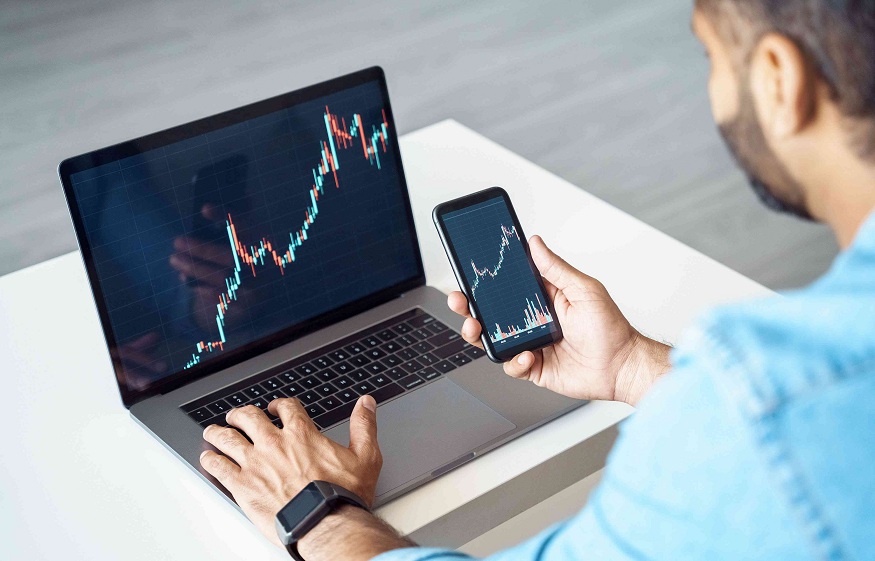Are you interested in commodities and commodity trading? Then you have come to the right place, because we are going to review the essential knowledge that is important to have when you want to invest in this area.
The aim is to inform readers about the nature of an investment in commodities, as well as to dispel certain myths that have developed over the past few years.
This guide does not give a so-called “step-by-step” procedure but only serves to explain a context that is accessible for all types of trading profiles.
We explain what commodities are, how they are traded and what determines their prices, you will also find specific information on commodities such as gold and oil.
Commodity trading is as old as the financial markets, and maybe even older.
The first example of an organized exchange for commodity trading dates back to Amsterdam in 1530, but commodity trading really took off with the creation of the Chicago Board of Trade in 1848.
Commodities are the backbone of the economy today and represent natural resources traded on global stock exchanges or specialized markets, which can be traded with just a few mouse clicks or tapping on your mobile device.
Among these different markets there is the LIFFE, the ICE Futures US and the Chicago Board of Trade which allow investing in agricultural production.
In other sectors we also find the London Metal Exchange for trading non-precious metals or the Chicago Mercantile Exchange for trading energies and metals or finally the ICE Futures Exchange for investing in energies.
However, the most popular stock market for investing in basic products or commodities in English, whether for professionals such as institutions, individuals or speculators, remains the Chicago Commodity Exchange.
How to trade with commodities?
Commodity trading or commodity trading, also called commodity trading, consists of trading commodities on a spot basis or in the form of derivatives. It is an exciting field where great fortunes are made and broken around the world.
With a sector that generates billions of dollars in turnover on the planet, it has enabled many captains of industry to build a veritable empire, such as George Kaiser, the billionaire who made his fortune in the oil sector, Iskander Makhmudov who got rich in the metallurgical industry after the fall of the USSR or Lakshmi Mittal with ArcelorMittal.
To be successful in investing in this area, you must have knowledge of commodity trading, fundamental analysis, or trading with technical analysis.Commodity trading encompasses players and factors that can influence commodity prices (weather, etc.) as well as geopolitics, while fundamental commodity analysis uses economic statistics to predict market developments. .
It studies the relationship between the price of a commodity and economic fundamentals such as GDP, leading indicators (PMI, etc.), recessions, inflation, unemployment, the foreign exchange market or the interest rate. .
Finally, technical analysis consists of an interpretation of charts from chart figures or technical indicators to anticipate the direction that the price trend will take for a commodity. In the past, you had to physically own the commodities, which of course had the effect of limiting speculation. But with the advent of new technologies, this necessity has been eclipsed, it is now possible to buy and sell products in seconds without owning them.
The main stock exchanges where commodities are traded
Commodity trading dates back at least to antiquity, ever since the global commodity market has gone through enormous transformations, in order to facilitate the exchange of commodities. Going from a simple physical exchange between buyers and sellers to an organized commodity exchange. Indeed, the modern commodity market refers both to a physical location where commodity trading takes place, as well as to legal entities that have been created to enforce trading rules on standardized contracts. from specific instruments (CFD, Futures, etc). In recent decades, a large number of commodity exchanges have merged or gone out of business. Some had to specialize, but a large part allows you to trade several different commodities.
In the United States, there is the Chicago Mercantile Exchange (CME), the Chicago Board of Trade (CBOT), the New York Mercantile Exchange (NYMEX), the Intercontinental Exchange (ICE) in Atlanta, Georgia, and Kansas City Board of Trade.
In London, there is the London International Financial Futures and Options Exchange (LIFFE), the International Petroleum Exchange (IPE), the London Metal Exchange (LME) and the London Bullion Market Association (LBMA).
Commodity trading and risk management
Another thing to consider when starting your trading journey is risk management, which despite its importance, many new traders still overlook.
To help you achieve your investment goals, risk management starts with knowing what’s going on in the political, economic and even physical world.
For example, it can be detrimental to ignore an event that could impact the markets in which you have active positions. Another way of managing your risk is money management with its management of stop loss orders.
Even if adding a stop order to its position can pose a problem for some traders, for fear that it will trigger and cause a possible loss.
It is important to consider it in your approach to commodity trading, because winning on the stock market without early and organized risk management can only bring temporary success.
What is a stop loss and why use it in trading?
The Stop Loss is an automatic stock market order that is added to a buy or short sell transaction, it allows a trader to cut his losses. In sum, a stop loss order is defined as the maximum loss that the trader incurs when opening a position on a stock market. By opening a stop-loss order, you thereby determine the amount of money you are willing to risk for each trade.

